Hinduism, one of the world’s oldest religions, is rich in cultural and architectural heritage. Temples are not just places of worship; they are also centers of learning, art, and culture. Some of these temples are monumental in size and spiritual significance, reflecting the grandeur and depth of Hindu beliefs. Below is a list of the biggest Hindu temples in the world, along with their importance to the global Hindu community.
1. Angkor Wat, Cambodia
Area: 162.6 hectares (1.6 million square meters)
Dedicated to: Lord Vishnu
Significance:
Angkor Wat is the largest religious monument in the world, originally built in the 12th century as a Hindu temple by King Suryavarman II. Its intricate carvings and grand architecture represent Hindu cosmology and mythological tales. Though it was later converted into a Buddhist temple, it remains a significant symbol of Hindu influence beyond India.

Cultural Impact: Angkor Wat serves as a reminder of Hinduism’s vast reach and historical influence in Southeast Asia.
Symbolism: The temple’s layout represents Mount Meru, the center of the universe in Hindu cosmology.
—
2. Sri Ranganathaswamy Temple, India
Location: Srirangam, Tamil Nadu, India
Area: 156 acres
Dedicated to: Lord Vishnu
Significance:
This temple is a major pilgrimage site for Vaishnavites. With 21 gopurams (tower gateways), the temple is a masterpiece of Dravidian architecture. Its sanctum houses a reclining Vishnu idol, symbolizing cosmic balance and preservation.
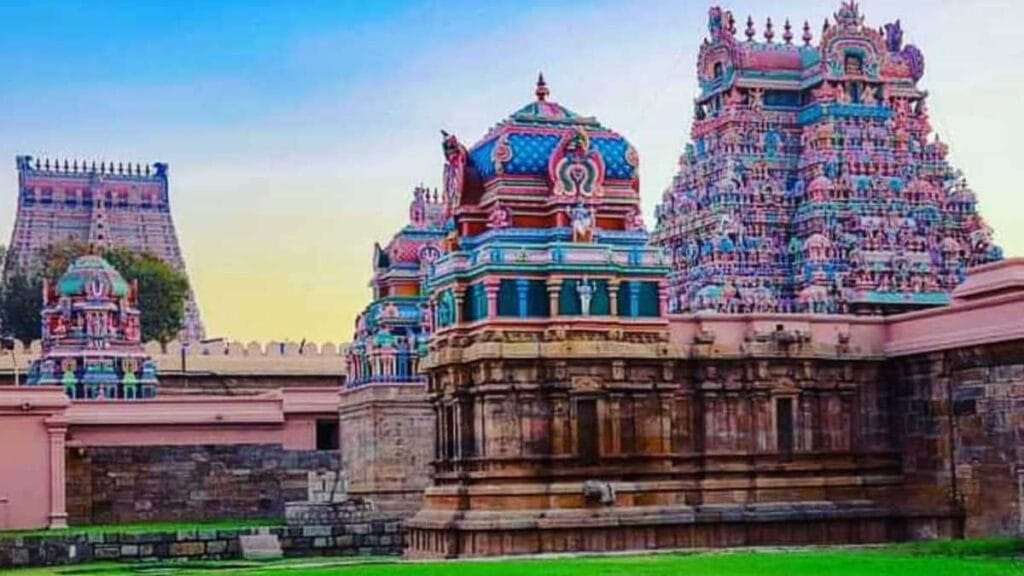
Spiritual Importance: It is one of the eight self-manifested shrines (Swayam Vyakta Kshetras) of Vishnu.
Festivals: The temple is renowned for its Vaikuntha Ekadashi celebrations, attracting millions of devotees.
—
3. Akshardham Temple, India
Location: Delhi, India
Area: 100 acres
Dedicated to: Bhagwan Swaminarayan
Significance:
Akshardham Temple is an architectural marvel of modern times, showcasing traditional Hindu art and culture. Built in 2005, it stands as a symbol of spiritual peace and devotion. The temple complex includes exhibitions, gardens, and a musical fountain.
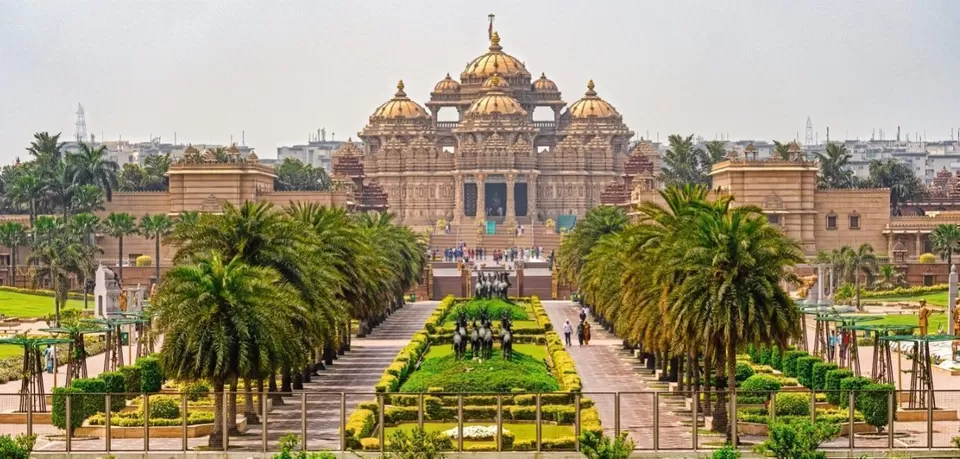
Cultural Role: It educates visitors about Hindu scriptures and values through exhibitions.
Global Appeal: Its construction demonstrates Hinduism’s contemporary relevance and ability to blend tradition with modernity.
—
4. Belur Math, India
Location: West Bengal, India
Area: 40 acres
Dedicated to: Ramakrishna Paramahamsa
Significance:
Designed to symbolize religious harmony, Belur Math combines architectural elements of Hindu, Christian, and Islamic styles. It is the headquarters of the Ramakrishna Mission, which works for education, health, and spiritual upliftment worldwide.

Universal Message: Promotes the idea of unity in diversity, a core Hindu belief.
Service-Oriented: Focuses on global humanitarian efforts.
—
5. Prambanan Temple, Indonesia
Location: Java, Indonesia
Dedicated to: The Trimurti (Brahma, Vishnu, Shiva)
Significance:
Prambanan is a UNESCO World Heritage Site and one of the largest Hindu temples in Southeast Asia. Built in the 9th century, it reflects the spread of Hinduism to Indonesia.
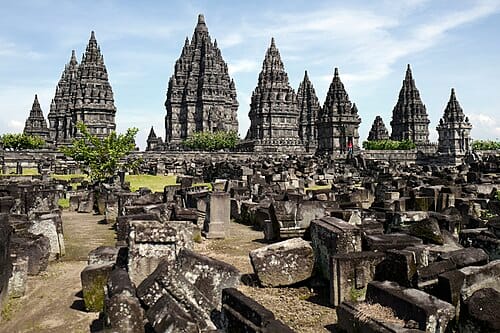
Cultural Exchange: Symbolizes the historical connections between India and Southeast Asia.
Architectural Grandeur: Known for its towering spires and bas-relief panels narrating Hindu epics like the Ramayana.
—
6. Meenakshi Amman Temple, India
Location: Madurai, Tamil Nadu, India
Area: 45 acres
Dedicated to: Goddess Meenakshi (a form of Parvati) and Lord Sundareswarar (Shiva)
Significance:
This temple is a vibrant cultural hub with its 14 gopurams adorned with thousands of colorful sculptures. It celebrates the union of Shiva and Parvati, symbolizing cosmic harmony.
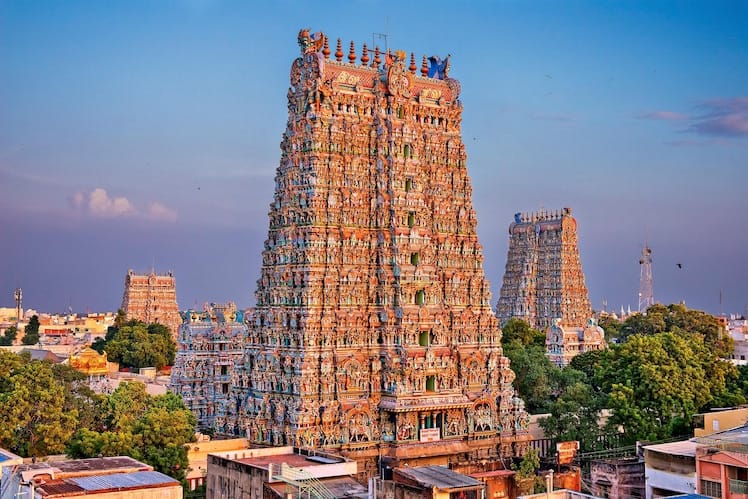
Spiritual Significance: A vital site for Shaivites and Shaktas.
Economic Role: It contributes significantly to local tourism and economy.
—
7. BAPS Shri Swaminarayan Mandir, London
Location: London, United Kingdom
Area: 23 acres
Dedicated to: Bhagwan Swaminarayan
Significance:
This temple is a beacon for the Hindu diaspora in the West. Built with intricate carvings of marble and limestone, it serves as a place for worship, cultural events, and community service.

Community Role: Strengthens the Hindu identity among the diaspora.
Global Recognition: Showcases Hindu architecture and values to a global audience.
—
8. Jagannath Temple, India
Location: Puri, Odisha, India
Area: 10.7 acres
Dedicated to: Lord Jagannath (a form of Vishnu)
Significance:
Famous for its Rath Yatra, the temple is one of the Char Dham pilgrimage sites. It symbolizes inclusivity, as the deities’ images are crafted from wood, accessible to all devotees.
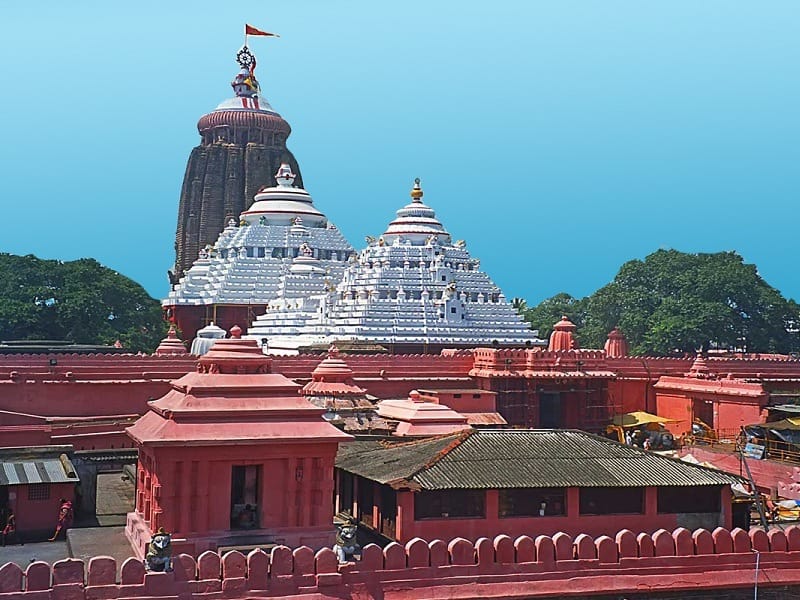
Inclusivity: Emphasizes unity among all sections of society.
Festive Spirit: Rath Yatra attracts millions, symbolizing collective devotion.
—
Why These Temples Are Important for Hindu Belief
1. Centers of Spiritual Energy
Hindu temples are believed to be imbued with spiritual energy, making them places of divine connection. They are built following principles of Vastu Shastra and Agama Shastra, ensuring cosmic alignment and harmony.
2. Cultural Heritage
These temples preserve Hindu traditions, art, and literature. Intricate sculptures, carvings, and paintings in these temples narrate stories from Hindu epics, inspiring generations.
3. Pilgrimage and Community Bonding
Pilgrimages to these temples foster a sense of unity among Hindus worldwide. Events like Rath Yatra and Vaikuntha Ekadashi bring millions together, reinforcing shared beliefs and values.
4. Spread of Hinduism Globally
Temples like Angkor Wat, Prambanan, and BAPS Swaminarayan Mandir in London highlight Hinduism’s spread and its ability to adapt across cultures. They act as symbols of pride for the global Hindu community.
5. Architectural Excellence
Hindu temples are architectural marvels, showcasing advanced engineering and artistry. They reflect the philosophy that spirituality and aesthetics can coexist.
6. Social and Educational Roles
Many temples engage in community service, education, and healthcare. Institutions like Belur Math exemplify this role, promoting Hinduism’s humanitarian aspect.
—
The biggest Hindu temples in the world are not just places of worship; they are living monuments that reflect the grandeur, depth, and inclusivity of Hindu beliefs. These temples inspire spiritual devotion, foster cultural pride, and serve as bridges between the past and the present, the East and the West. By continuing to thrive and attract millions, they emphasize Hinduism’s universal appeal and its ability to resonate across time and space.











